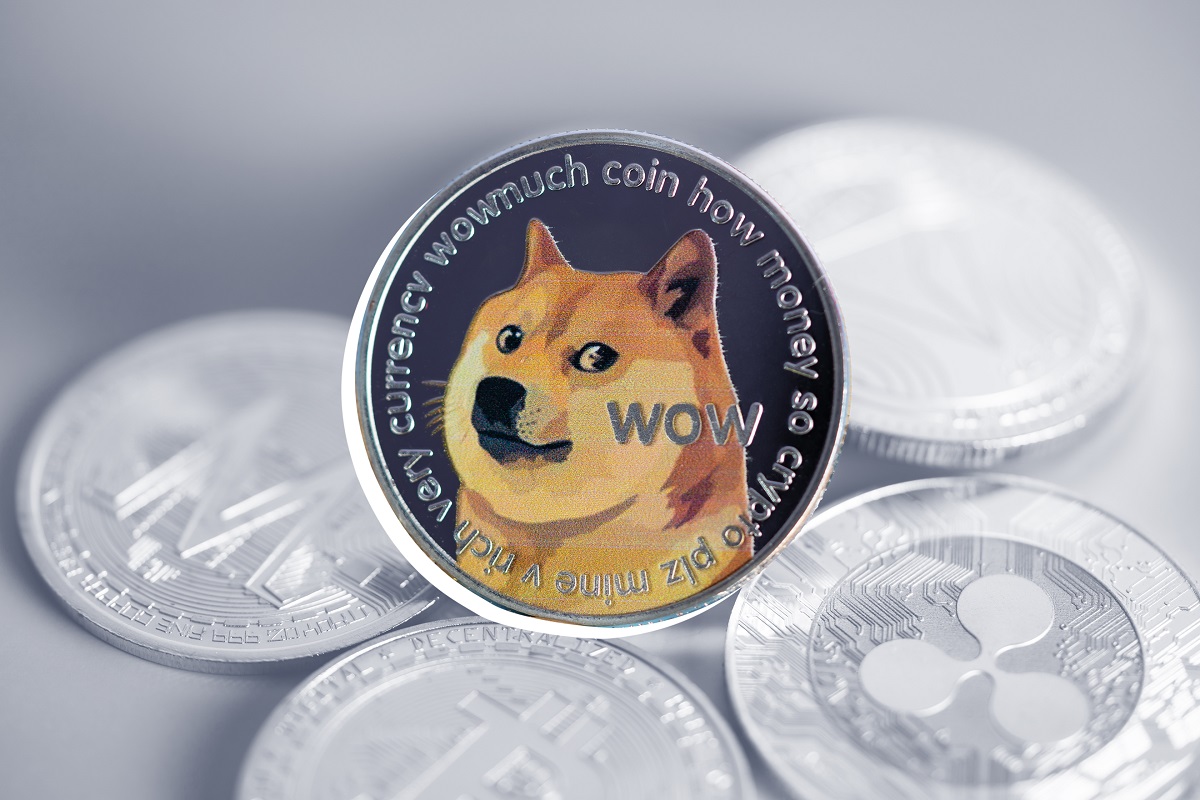Introduction
Welcome to the world of Dogecoin mining! If you’re new to the cryptocurrency scene, you may be wondering what Dogecoin is and how it can be mined. In this article, we will explore the basics of Dogecoin mining and provide you with the information you need to get started.
Dogecoin, launched in 2013, is a digital currency that was inspired by the popular “Doge” meme featuring a Shiba Inu dog. While initially created as a joke, Dogecoin has gained a loyal following and has become a viable cryptocurrency in its own right. It utilizes the Scrypt algorithm, which differs from the more commonly used SHA-256 algorithm.
To understand mining, you need to know that cryptocurrencies like Dogecoin are decentralized digital currencies, meaning they operate without a central authority. Instead, the transactions are verified and recorded on a public ledger called a blockchain by miners, who dedicate their computing power to solving complex mathematical problems.
By solving these problems, miners add new blocks to the blockchain and are rewarded with a certain number of Dogecoins. Mining can be a profitable venture if done correctly, but it requires powerful hardware, specialized software, and a good understanding of the mining process.
In the following sections, we will cover the hardware requirements for Dogecoin mining, selecting the appropriate software, setting up your miner, joining a mining pool, configuring your mining software, monitoring your mining operations, and troubleshooting common issues that may arise.
Whether you’re new to mining or have some experience under your belt, this guide will provide you with the knowledge and resources to start mining Dogecoin and potentially earn some digital currency in the process. So, let’s dive in and explore the exciting world of Dogecoin mining!
What is Dogecoin?
Dogecoin, a portmanteau of “dog” and “coin,” is a digital currency that was introduced in December 2013. It gained popularity due to its fun and lighthearted nature, exemplified by its logo featuring the Shiba Inu dog from the “Doge” meme. Despite its origins as a joke cryptocurrency, Dogecoin has since carved out a niche for itself in the digital currency world.
One of the distinguishing factors of Dogecoin is its community-driven approach. Unlike other cryptocurrencies, Dogecoin has a large and active community of supporters who use it for various purposes, including tipping content creators online and supporting charitable causes. The community’s generosity and involvement have sparked numerous initiatives, such as fundraising for clean water projects and sponsoring athletes and events.
Technically speaking, Dogecoin is based on the Litecoin blockchain, which is a fork of the Bitcoin blockchain. It utilizes the Scrypt algorithm for mining, making it resistant to ASIC mining, which ensures a more level playing field for individual miners. Despite its technical similarities to Litecoin, Dogecoin has a shorter block time of just one minute, allowing for faster transactions and confirmations.
One notable aspect of Dogecoin is its inflationary monetary policy. Unlike Bitcoin, which has a fixed supply of 21 million coins, Dogecoin has no maximum supply cap. Instead, it has an annual inflation rate of approximately 5.26%. This decision was made to encourage circulation and ensure the continuous creation of new Dogecoins, thereby avoiding potential scarcity and high transaction fees.
Since its inception, Dogecoin has garnered a passionate and dedicated following. Its enthusiastic community, combined with its charitable initiatives and user-friendly nature, has helped it remain relevant and continue to attract new users. Dogecoin has gained recognition as a legitimate and unique cryptocurrency, proving that a lighthearted meme can have a tangible impact in the digital currency space.
In the next sections, we will explore how Dogecoin mining works, the hardware requirements for mining Dogecoin, and the steps involved in setting up your mining operation. By the end of this guide, you will have a solid understanding of Dogecoin and be ready to embark on your mining journey.
Understanding Mining
Mining is an essential process in the world of cryptocurrencies, including Dogecoin. It involves using computational power to solve complex mathematical problems in order to validate and secure transactions on the blockchain. Let’s dive deeper into the concept of mining and its significance in the Dogecoin network.
At its core, mining serves two main purposes: verifying transactions and creating new coins. When someone initiates a Dogecoin transaction, it is broadcasted to the network, and miners compete to validate and add that transaction to a block on the blockchain. The process of mining ensures that all transactions are legitimate and prevents fraud or double-spending.
To validate transactions, miners use powerful hardware devices, such as ASICs (Application-Specific Integrated Circuits) or GPUs (Graphics Processing Units). These devices perform complex calculations and solve cryptographic puzzles, which require substantial computational power. Once a miner successfully solves a puzzle, they add a new block to the blockchain and are rewarded with a certain number of Dogecoins.
Mining plays a critical role in maintaining the integrity and security of the Dogecoin network. The decentralized nature of cryptocurrencies means that there is no central authority controlling transactions. Instead, the network relies on a consensus mechanism – in Dogecoin’s case, it’s a proof-of-work (PoW) consensus algorithm – to ensure that all transactions are valid and trustworthy.
As more miners compete to add new blocks to the blockchain, the network adjusts the difficulty level of the puzzles to maintain a consistent rate of block creation. This ensures that new blocks are added approximately every minute, maintaining the smooth functioning of the Dogecoin network.
It’s important to note that mining requires a significant amount of electricity to power the mining hardware and keep it running 24/7. As a result, mining can be resource-intensive and costly. Some miners opt to join mining pools, where they combine their computing power with other miners to increase their chances of solving puzzles and earning rewards, while sharing the profits among pool members.
Understanding the concept of mining is crucial for anyone looking to get involved in Dogecoin mining. In the next sections, we will explore the hardware requirements for mining Dogecoin, the different mining software options available, and the step-by-step process to set up your Dogecoin mining operation. By the end of this guide, you will have a solid foundation to start mining Dogecoin and potentially earn some digital currency.
Hardware Requirements
When it comes to mining Dogecoin, having the right hardware is crucial. The mining process is computationally intensive, requiring powerful hardware devices to perform the complex calculations necessary for solving cryptographic puzzles. Here are the hardware requirements you need to consider before diving into Dogecoin mining.
1. CPU/GPU/ASIC: The first thing you’ll need is a mining device. In the early days of Dogecoin, mining could be done with a CPU (Central Processing Unit) or GPU (Graphics Processing Unit). However, as the difficulty of mining increased, specialized hardware called ASICs (Application-Specific Integrated Circuits) became more popular. ASICs are designed specifically for mining cryptocurrencies and offer much higher hashing power compared to CPUs and GPUs.
2. Hashrate: Hashrate refers to the number of calculations a mining device can perform per second. It is a crucial factor in determining mining efficiency. The higher the hashrate, the more likely you are to solve the puzzles and earn Dogecoins. When choosing hardware, consider the hashrate it can deliver and its power consumption.
3. Power Consumption: Mining is a power-intensive process, so it’s important to consider the power consumption of your mining hardware. ASICs are known for their high hashrate and energy efficiency, making them a popular choice among miners. However, they can be expensive to purchase upfront.
4. Cooling: Mining generates a significant amount of heat, so adequate cooling is essential for maintaining the longevity of your mining hardware. Consider investing in cooling solutions such as fans or liquid cooling systems to ensure optimal operating temperatures.
5. Internet Connection: A stable internet connection is necessary for mining, as it allows your mining hardware to communicate with the Dogecoin network. High-speed internet with low latency is recommended to minimize connectivity issues.
6. Storage: Although storage space is not a critical requirement for mining itself, you will need sufficient storage to store your Dogecoin wallet and blockchain data. Ensure you have enough free space on your computer or external storage device to accommodate the blockchain’s growing size.
It’s important to note that the hardware requirements for mining Dogecoin have evolved over time. As the network’s difficulty increases and technology advances, older hardware may become less efficient or obsolete. Therefore, it’s crucial to stay updated on the latest mining hardware trends and technologies to maximize your mining efficiency.
In the next section, we will discuss the available options for Dogecoin mining software and guide you through the process of selecting the right software for your mining operation.
Choosing a Dogecoin Mining Software
Once you have the appropriate hardware for mining Dogecoin, the next step is to choose the right mining software. Mining software acts as an interface between your hardware and the Dogecoin network, allowing you to control and manage your mining operations. Here are some key factors to consider when selecting a Dogecoin mining software:
1. Compatibility: Ensure that the mining software you choose is compatible with your mining hardware. Different software may be optimized for specific types of hardware, such as ASICs or GPUs. Check the software’s documentation or website for compatibility details.
2. Features: Consider the features offered by the mining software. Some software may provide additional functionalities like monitoring your mining performance, adjusting fan speeds, or switching between different mining pools. Evaluate the features that are important to you and choose software that meets your requirements.
3. User-Friendliness: Look for software that is easy to set up and configure, especially if you are a beginner. A user-friendly interface and clear instructions can make the mining process more accessible and enjoyable.
4. Community Support: Research the software’s community and support forums. A well-established and active community can provide valuable assistance and troubleshooting tips. Look for software that has regular updates and a responsive community to ensure a smooth mining experience.
5. Security: Mining software interacts with your Dogecoin wallet and the network, so it’s important to select software from reputable sources. Ensure that the software is trusted and has a good track record in terms of security and reliability.
6. Operating System: Consider the operating system you are using and make sure the mining software is compatible. Some software may be specifically designed for Windows, while others may have versions for macOS and Linux.
7. Mining Pool Integration: If you plan to join a mining pool, check if the software offers integration with popular mining pools. This will make it easier for you to connect and start mining with your preferred pool.
Remember, choosing the right mining software is crucial for the success of your Dogecoin mining operation. Take the time to research different options, read user reviews, and consider your specific needs and preferences. Ultimately, the goal is to find software that is compatible with your hardware, user-friendly, reliable, and equipped with the features you require.
In the next section, we will guide you through the process of setting up your Dogecoin miner, regardless of the mining software you choose. So, let’s get ready to start mining Dogecoin!
Setting Up your Dogecoin Miner
Once you have selected the appropriate mining software, it’s time to set up your Dogecoin miner. Follow the steps below to ensure a smooth and successful setup:
1. Install the Mining Software: Download and install the mining software on your mining device. Make sure to choose the version that is compatible with your operating system. Follow the installation instructions provided by the software developer.
2. Configure the Mining Software: Open the mining software and locate the configuration settings. You will need to provide details such as your mining pool’s address, your wallet address, and any additional settings required by the software. Refer to the software’s documentation for guidance on configuring these settings.
3. Join a Mining Pool: If you haven’t already, consider joining a mining pool. Mining alone can be challenging, especially for small-scale miners. By joining a mining pool, you combine your computing power with other miners, increasing your chances of earning rewards. Follow the instructions provided by your mining pool to create an account and obtain the necessary information to connect to the pool.
4. Connect to the Mining Pool: In the mining software, enter the mining pool’s address and port number. These details can usually be found on the mining pool’s website. Additionally, provide your mining pool username and password, if required. This will establish a connection between your mining software and the mining pool.
5. Enter your Dogecoin Wallet Address: In the mining software, enter your Dogecoin wallet address. This is where you will receive your mined Dogecoins. If you don’t have a wallet address, create one by downloading a Dogecoin wallet application or using an online wallet service. Ensure that you keep your wallet address safe and secure.
6. Start Mining: After completing the configuration, save the settings and start the mining process. The mining software will utilize your mining hardware to solve mathematical problems and contribute to the Dogecoin network. Monitor the performance of your mining operations through the software’s interface or any additional monitoring tools provided by the software.
7. Optimize and Fine-tune: Once your mining operation is up and running, you may want to optimize and fine-tune your settings for optimal efficiency. This could involve adjusting the mining software’s intensity or overclocking your hardware, if supported. However, be cautious while making any changes and ensure proper cooling and stability to avoid damaging your hardware.
Congratulations! You have successfully set up your Dogecoin miner. Keep in mind that mining can be a resource-intensive process, requiring continuous monitoring and maintenance. Stay updated with the latest mining software updates and security patches to ensure a smooth mining experience.
In the next section, we will discuss the benefits of joining a mining pool and guide you through the process of joining one. So, let’s explore the world of mining pools and maximize your mining performance!
Joining a Mining Pool
Joining a mining pool is a popular choice for Dogecoin miners, especially for those with limited mining resources. Mining alone can be challenging and time-consuming, as the chances of solving a block and earning rewards are relatively low. By joining a mining pool, you combine your computing power with other miners, increasing your chances of earning consistent rewards. Here’s a step-by-step guide to help you join a Dogecoin mining pool:
1. Research and Choose a Mining Pool: There are several Dogecoin mining pools available, each with its own features and benefits. Research different pools and consider factors such as pool fees, payout methods, pool size, and reputation. Look for a well-established pool with a good track record and a high hash rate.
2. Create an Account: Visit the mining pool’s website and create an account. This usually involves providing an email address and setting up a password. Some pools may require additional information for verification purposes.
3. Select a Mining Software: Choose mining software that is compatible with your hardware and supports the mining pool you’ve selected. Popular mining software options include CGMiner, BFGMiner, and EasyMiner. Download and install the mining software on your mining device.
4. Configure the Mining Software: Open the mining software and navigate to the configuration settings. Enter the information provided by the mining pool, such as the pool’s address, port number, and your mining pool username. Adjust any additional settings according to the pool’s guidelines. Save the configuration settings.
5. Connect to the Mining Pool: Launch the mining software and establish a connection to the mining pool by entering the pool’s address and port number. This connection allows your mining software to communicate with the pool and collaborate with other miners.
6. Monitor and Track: Once connected to the mining pool, you can monitor the performance of your mining operations through the mining software’s interface or the pool’s dashboard. The dashboard provides real-time information on your hashrate, shares submitted, and the rewards you earn.
7. Set up Payment Address: In most mining pools, you’ll need to specify a payment address to receive your earned Dogecoins. This address is usually your Dogecoin wallet address. If you don’t have a wallet address, create one by downloading a Dogecoin wallet application or using an online wallet service.
8. Withdraw Your Earnings: Some mining pools have specific payout thresholds, meaning you need to reach a certain amount of Dogecoins before you can withdraw your earnings. Review the pool’s payout policies and set up automatic withdrawals or manually request withdrawals once you reach the minimum payout threshold.
By joining a mining pool, you can benefit from the combined computational power of multiple miners, increasing your chances of earning a steady stream of Dogecoins. Work together with the mining pool community, share knowledge, and stay updated with the pool’s resources to optimize your mining performance.
In the next section, we will discuss the process of configuring your mining software, which is essential for maximizing your mining efficiency. So, let’s fine-tune your mining setup and dive deeper into the configuration process!
Configuring your Mining Software
Configuring your mining software is a crucial step in optimizing your Dogecoin mining operation. By adjusting the settings to match your hardware and mining preferences, you can maximize your mining efficiency and potential earnings. Follow these steps to configure your mining software:
1. Open the Mining Software: Launch the mining software you have installed on your mining device. Depending on the software, you may find it as a standalone application or a command-line interface.
2. Check for Updates: Before configuring the software, check for any available updates. Mining software developers often release updates to improve performance, fix bugs, and introduce new features. Keeping your software up to date ensures that you have the latest optimizations and security enhancements.
3. Select the Device: If you have multiple mining devices connected to your system, choose the specific device you want to configure. Most mining software allows you to select the device by specifying its unique identifier or device name.
4. Configure Mining Parameters: Navigate to the configuration or settings section of the mining software. Here, you will find various parameters that you can adjust to optimize your mining performance.
5. Algorithm and Pool Settings: Specify the algorithm used for mining Dogecoin, which is Scrypt. Additionally, input the details of the mining pool you have joined, including the pool’s address, port number, and your pool username.
6. Intensity: Intensity determines the level of mining effort you want to put into solving cryptographic puzzles. Higher intensity values result in more computational power being utilized but may also increase power consumption and heat generation. Find a balance that suits your hardware capabilities and environmental conditions.
7. Fan Control: If your hardware supports it, you may have the option to adjust fan speeds for better cooling. Proper cooling is essential to maintain optimal operating temperatures and prevent hardware damage.
8. Monitoring and Notifications: Set up monitoring features, such as temperature and hashrate monitoring, to keep track of your mining operations. Some software may also provide notifications or alerts for potential issues or low hashrate performance.
9. Save and Apply: Once you have made the necessary configurations, save the settings. Some mining software requires you to restart the program for the changes to take effect.
10. Test and Fine-tune: After configuring your mining software, monitor its performance to ensure stability. Keep an eye on key metrics like hashrate, accepted shares, and temperature. If needed, fine-tune the settings further to optimize performance and minimize errors.
Remember to refer to the mining software’s documentation or community resources for more specific guidance on configuring your chosen software. Each software may have its own unique set of configuration options, so it’s essential to understand their functionalities and how they may impact your mining operations.
In the next section, we will explore the importance of monitoring your mining operations and how to maximize efficiency. Let’s dive into the world of monitoring and fine-tuning!
Monitoring and Maximizing Mining Efficiency
Monitoring your Dogecoin mining operations is crucial to ensure optimal efficiency and maximize your potential earnings. By keeping a close eye on various metrics and fine-tuning your setup, you can enhance your mining performance. Here are a few key factors to monitor and ways to maximize mining efficiency:
1. Hashrate: Monitor your hashrate, which represents the number of calculations your mining hardware can perform per second. A higher hashrate increases your chances of solving the cryptographic puzzles and earning rewards. Keep an eye on your hashrate and fine-tune your hardware and software settings to maximize efficiency.
2. Accepted Shares: Track the number of accepted shares your mining software submits to the mining pool. Accepted shares indicate successful solutions to the cryptographic puzzles, which contribute to earning rewards. Monitoring accepted shares helps you assess the effectiveness of your mining setup.
3. Temperature and Cooling: Pay attention to the temperature of your mining hardware. High temperatures can reduce performance and potentially lead to hardware damage. Ensure proper cooling mechanisms are in place, such as sufficient airflow, fans, or liquid cooling systems. Regularly clean dust from fans and heatsinks to maintain optimal cooling efficiency.
4. Power Consumption: Keep track of the power consumption of your mining operation. Mining can be electricity-intensive, so monitoring power usage helps you assess energy efficiency and estimate operational costs. Optimize your hardware settings and consider energy-saving measures to minimize power consumption.
5. Software Updates: Stay updated with the latest mining software releases. Software updates often include performance improvements, bug fixes, and security patches. Regularly check for updates and apply them to ensure optimal mining efficiency and stability.
6. Pool Performance: Monitor the performance of the mining pool you have joined. Assess important metrics like pool hashrate, pool efficiency, and the number of active miners. If you notice significant drops in pool performance, consider switching to a more reliable or higher-performing pool.
7. Network Difficulty: Keep an eye on the network difficulty of Dogecoin. Network difficulty adjusts automatically to ensure a consistent block creation rate. Changes in network difficulty can affect your mining efficiency and potential earnings. Stay informed about difficulty adjustments and adjust your mining strategies accordingly.
8. Regular Maintenance: Perform regular maintenance on your mining hardware. Clean fans and heatsinks, inspect cabling, and check for any signs of wear or damage. Regular maintenance ensures the longevity of your equipment and helps maintain optimal performance.
Remember to consult the documentation and resources provided by your mining software and hardware manufacturers for specific monitoring techniques and best practices. Additionally, engage with the mining community through forums and online communities to share insights and gain knowledge on optimizing mining efficiency.
By proactively monitoring your mining operations and making necessary adjustments, you can enhance your mining efficiency, increase your chances of earning rewards, and achieve a more profitable Dogecoin mining experience.
In the next section, we will discuss common issues that may arise during the mining process and provide troubleshooting tips to help you resolve them. Let’s prepare for potential challenges and keep your mining operations running smoothly!
Troubleshooting Common Mining Issues
While mining Dogecoin can be a rewarding endeavor, it’s not uncommon to encounter some challenges along the way. Understanding common mining issues and knowing how to troubleshoot them can help you overcome obstacles and keep your mining operations running smoothly. Here are some common mining issues and potential solutions:
1. Low Hashrate: If you notice a consistently low hashrate, it could be due to various factors. Check that your mining hardware is properly connected and configured. Ensure that your mining software is up to date and optimized for your specific hardware. Additionally, confirm that you have configured the correct mining pool settings.
2. Hardware Overheating: Overheating can lead to reduced mining efficiency and potential hardware damage. Ensure that your mining hardware has adequate cooling, such as fans or liquid cooling systems. Clean dust from fans and heatsinks regularly. Consider reapplying thermal paste to the CPU or GPU if temperatures remain high.
3. Connectivity Issues: If you experience frequent disconnections or connectivity issues with your mining pool, check your internet connection stability. Ensure you have a reliable and high-speed internet connection. Consider using an Ethernet connection instead of Wi-Fi for more stable connectivity.
4. Software Crashes: If your mining software crashes or becomes unresponsive, verify that you are using the latest version. Check if there are any reported issues or bugs with the software. Try running the software with different configuration settings or reinstalling it if the problem persists.
5. Insufficient Shares: If your mining software is not submitting enough shares to the mining pool, it could indicate a problem with your mining configuration. Double-check the accuracy of the pool address, port number, and your username/password. Ensure that your mining software is compatible with the mining algorithm and pool you are using.
6. High Rejected Shares: Rejected shares occur when the mining pool determines that the submitted solution is invalid. High rejected share rates could be due to hardware or software instability, incorrect mining settings, or connectivity issues. Verify your mining software configuration, check for hardware errors, and ensure a stable internet connection.
7. Insufficient Rewards: If you are not receiving the expected rewards for your mining efforts, consider factors such as the mining pool’s payout policies, the luck factor in finding blocks, and the network difficulty. Keep in mind that mining is a probabilistic process, and rewards may vary. If necessary, consider adjusting your mining strategies or switching to a different mining pool.
8. Hardware Compatibility: Always ensure that your mining hardware is compatible with the mining software and algorithm you are using. Some mining software may not support certain hardware configurations or algorithms. Check the documentation or official website of the mining software for compatibility details.
If you encounter any other specific issues during your mining journey, consult the documentation and support resources provided by your mining software, hardware manufacturers, and mining pool. Engaging with the mining community through forums and online communities can also provide valuable insights and assistance to troubleshoot and resolve issues.
Remember, persistence and continuous learning are key to successful mining. Troubleshooting common mining issues requires patience and a willingness to adapt to evolving technologies and practices. Embrace challenges as opportunities for growth and continue refining your mining operations for greater efficiency and profitability.
In the final section, we will summarize the key points discussed throughout this guide and provide a concluding thought. So, let’s wrap up our mining journey with a quick recap!
Conclusion
Congratulations on completing this guide to Dogecoin mining! We have explored the fundamentals of Dogecoin, the process of mining, hardware requirements, software selection, setup, monitoring, and troubleshooting. By now, you should have a solid understanding of what it takes to start mining Dogecoin and potentially earn rewards in the form of this lighthearted cryptocurrency.
Dogecoin, born out of a meme, has evolved into a valuable digital currency with a passionate community. Its unique characteristics and active involvement in charity initiatives have set it apart from other cryptocurrencies.
Throughout the guide, we emphasized the importance of selecting compatible mining hardware and software, joining mining pools, configuring your mining software, and monitoring mining efficiency. These factors play a crucial role in maximizing your chances of success in the competitive world of Dogecoin mining.
As with any endeavor, mining Dogecoin comes with its challenges. From troubleshooting common mining issues to adapting to changing network difficulty, persistence and continuous learning are essential for long-term success. Engaging with the mining community, staying updated with software and hardware developments, and embracing the evolving nature of mining technology will enable you to stay competitive and optimize your mining operations.
Remember, the journey of Dogecoin mining goes beyond pure profitability. It’s about being part of a community, contributing to the network’s security, and potentially supporting charitable causes. The Dogecoin community’s lighthearted and generous spirit is a unique aspect that sets it apart from other cryptocurrencies.
We hope this guide has equipped you with the necessary knowledge to embark on your Dogecoin mining adventure. Whether you’re a beginner or an experienced miner, always approach mining with caution and manage your resources wisely. Good luck, and may your mining efforts bring you success and enjoyment in the world of Dogecoin!

























